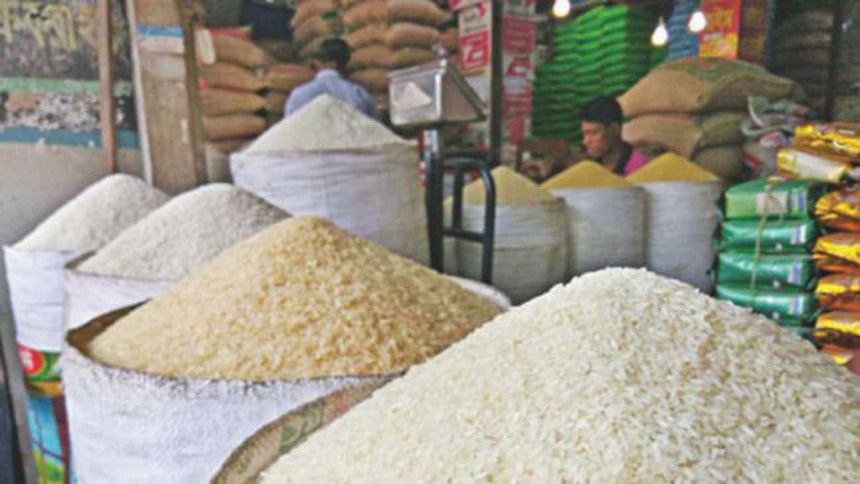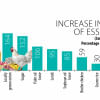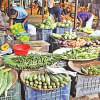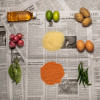The curious case of rice price hike

A minister was telling me the other day that if people don't mind spending Tk. 300 on a cheese burger, why can't they afford a little more for rice? His comment obviously came in reference to the current high price of the staple in the retail market. Supporting his comment, someone asked, isn't this government providing the ultra-poor with food doles — giving them cushion against the high rice price in the market?
Obviously, they had essentially failed to take into account the overwhelming majority of people who are either poor, or belong to the lower middle-income bracket — who neither fall into the relatively small category of ultra-poor, nor the marginal category of burger-eaters. They are not taken care of. Any rapid and unusual surge of rice price (as is happening now) would definitely dent their wallets and dent it deep.
We'll deal with the rice-skipping, burger-munching minority of urban youths later. Let's talk about the ultra-poor first. In fact, today's abnormal hike in rice price is apparently connected to a government initiative of providing the ultra-poor with rice at Tk. 10 per kg.
In the latter half of last year, the government started enlisting five million ultra-poor with an aim of feeding them with 7.5 lakh tonnes of rice in the subsequent five months at a rate (Tk. 10 per kg) that is a fourth of the market price. This programme has been running since September 2016 along with the government's hundred other social safety net programmes, many of which are also related to food aid.
While the government was in a frenzy doling out low-cost rice to the ultra-poor, it nearly exhausted its safe level of rice stock in the public granaries. Its food department completely failed to prepare for what was coming and did next to nothing to replenish the dried up rice stock. The stock fell below a nadir at 1.85 lakh tonnes, a 10-year low in this country.
Independent think tanks, farm and food sector experts and economists forewarned the government not to allow such depletion of rice in its stock. But for whatever reason (only the government can explain), it allowed the freefall of rice stock. This weakened the government's position and made it difficult for any sort of market intervention, at which point profit-mongering rice traders started to benefit.
Things got further complicated when unusually early flash-floods washed away, according to the most conservative estimate, 10 lakh tonnes of rice in the northeastern back-swamps — where winter Boro rice is the only major cereal that grows in a crop year. On top of that, we lost more Boro rice in fungal attack (rice blast) in as many as 19 districts. Up until now, the Department of Agricultural Extension has not come up with any concrete estimation on fungi-induced crop losses.
No matter how slow the government apparatuses move in making trustworthy loss assessments, rice millers and private traders were smart enough to recognise a looming supply shortage in the market. As they started to push the price up, it still didn't occur to the concerned government departments that they should intervene to ensure higher availability of rice.
The food department rather missed a chance to replenish the rice stock, completely failed to procure paddy directly from the farmers early into the Boro harvesting season and then made a late entry into the market, that too, with non-lucrative price offers. The result was obvious. Why should rice millers — who can easily fetch Tk. 39-40 for each kilogram of rice in the open market — sell rice to the government at Tk. 34 a kg?
After the state-run agency, Trading Corporation of Bangladesh, showed through market analysis how prices of the coarse varieties of rice jumped 47 percent in June, comparing it to the corresponding period of 2016, the government thought of buying rice from the international market. It struck at least three deals to ship in 3.5 lakh tonnes of rice; but it is unlikely to reach before early July. The government also took a long time in deciding that it should decrease a high tariff (28 percent) on rice import.
In fact, such high tariffs on rice import deterred the private sector from importing rice in a crop-loss year — which is rather unusual. One can now easily and very legitimately raise the question: Who pushed up the rice price? Why did we allow rice stock to deplete in the first place? Why didn't we replenish the stock while going full throttle with newer rice dole schemes? Why did we fail in procuring rice from the farmers early in the season? And, why did it take us so long to lower the duty on rice import?
In a country with more than 160 million people, the ultra-poor and burger-eaters are definitely a minority. I beg to differ with the notion that one should not worry about high rice prices — where burger-eaters can take care of themselves (even with the finance minister slapping a 15 percent VAT on top of the 10 percent supplementary duty on fast food) and the government takes care of the ultra-poor — because of a simple reason. There are still millions of others in this country whose quality of life is compromised when coarse rice price jumps from Tk. 30 per kg to Tk. 48. As they are now pushed up against the wall, what they will essentially have to do is consume less rice which is the only major source of energy for many and/or cut down their expenditure on other food items such as vegetables, fruits, etc.
The writer is Assignment Editor at The Daily Star.
E-mail: [email protected]

 For all latest news, follow The Daily Star's Google News channel.
For all latest news, follow The Daily Star's Google News channel. 








Comments